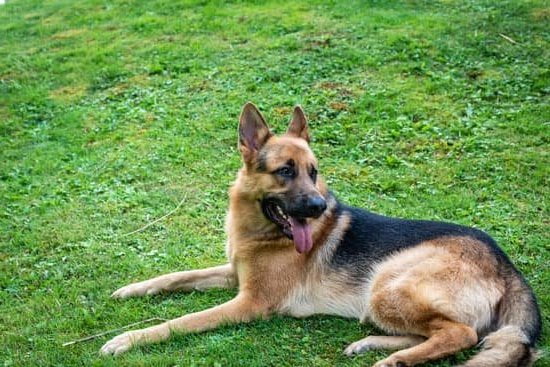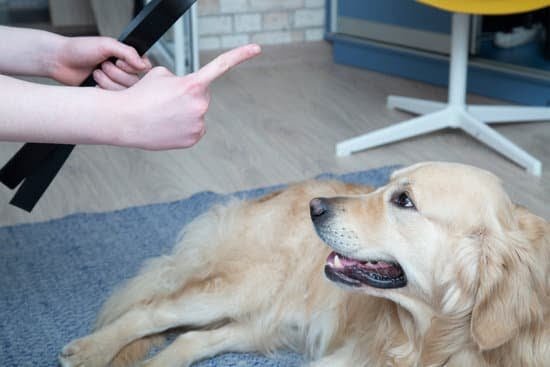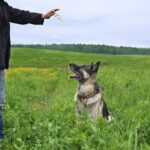Are you curious about how old dogs are when they are potty trained? Potty training is an essential part of a dog’s development, and understanding the process can make it more manageable for both you and your furry friend.
In this article, we will explore the key factors that influence potty training timelines for dogs. From understanding puppy development milestones to the role of consistency and training methods, we’ll provide valuable insights to help you navigate this important aspect of pet ownership.
Potty training is a crucial aspect of a dog’s early development, and it plays a significant role in their overall well-being. Just like human infants, puppies go through various developmental stages, including reaching milestones related to potty training readiness. Additionally, different dog breeds may have varying timelines for potty training success, making it important to consider breed-specific factors in the training process.
As a responsible pet owner, it’s essential to be aware of the signs of potty training readiness in dogs. Understanding your pet’s cues can help you create a positive and successful potty training experience.
Additionally, recognizing common challenges and having effective strategies in place can set your pet up for success during this crucial learning process. So let’s dive into the various aspects of potty training for dogs and equip ourselves with the knowledge needed to support our furry companions through this important milestone.
Puppy Development
Potty training is an important aspect of a dog’s early development, and understanding the right age milestones for potty training readiness is crucial for pet owners. Puppies go through various developmental stages, and their ability to control their bladder and bowel movements gradually improves over time. Here are some key age milestones that play a significant role in determining when a puppy is ready for potty training:
- 8 weeks: At this age, puppies are just beginning to develop the physical and cognitive abilities required for potty training. They may start to show signs of understanding basic commands and routines.
- 12 weeks: By this age, most puppies have better control over their bodily functions and can hold their bladder and bowel movements for longer periods. They may also start to exhibit signs of signaling when they need to go potty.
- 16 weeks: At 4 months old, many puppies are capable of being fully potty trained, although there may still be occasional accidents as they continue to refine their bladder control.
It’s important to keep in mind that individual puppies may progress at different rates, so these age milestones should be used as general guidelines rather than strict rules. As a pet owner, it’s essential to pay close attention to your puppy’s behavior and look for cues that indicate readiness for potty training.
Understanding the developmental stages of puppies can help pet owners adjust their expectations and approach to potty training. By being patient and consistent with positive reinforcement techniques, owners can create a successful potty training experience for their furry companions.
The Role of Breed
When it comes to potty training, the age at which a dog can be successfully housetrained is influenced not only by their individual development but also by their breed. Different dog breeds have distinct characteristics that can affect their potty training timelines. Understanding these factors can help owners set realistic expectations and develop effective strategies for potty training success.
Some breeds are known for being quick learners and may be ready to be fully potty trained at a younger age, while others may take longer to grasp the concept of where they should eliminate. For example:
- Toy breeds such as Chihuahuas or Yorkies may take longer to become reliably housetrained due to their small bladders and higher metabolism.
- Working breeds like Border Collies or German Shepherds are typically quick learners and may show signs of readiness for potty training at an earlier age.
- Breeds with a strong instinct to mark territory, such as Beagles or Dachshunds, may require more consistent training and supervision to master potty training.
It’s important for dog owners to research their specific breed’s traits and tendencies when it comes to potty training. By understanding how different breeds can impact the timeline for achieving successful housetraining, owners can make informed decisions about how best to approach the process.
Additionally, some breeds may have unique behavioral traits that affect their approach to potty training, such as stubbornness or independence. Knowing these breed-specific tendencies can help owners tailor their training methods to better suit their dog’s individual needs. Ultimately, with patience, consistency, and an understanding of breed-specific factors, owners can set their dogs up for success in achieving reliable potty training.
Owner’s Influence
Potty training a dog requires commitment and consistency from the owner. The way the training process is approached greatly impacts the success and timeline of potty training for dogs. Owners play a crucial role in shaping their pet’s behavior and ensuring that they understand where it’s appropriate to do their business.
The Impact of Consistency
Consistency is key when it comes to potty training a dog. This means taking your dog out at the same times every day, providing praise and rewards for good behavior, and maintaining a routine. Dogs thrive on routine, so the more consistent you are with their potty schedule, the quicker they will learn where it’s appropriate to go.
Training Methods
There are various methods and techniques for potty training dogs, including crate training, paper training, and using potty pads. Each method has its own set of pros and cons, as well as varying timelines for success. It’s important for owners to choose a method that best suits their dog’s needs and their lifestyle. Additionally, positive reinforcement is an effective approach to potty training, as it encourages good behavior through rewards and praise.
Establishing Clear Communication
Clear communication between the owner and the dog is essential throughout the potty training process. This involves using verbal cues or commands when guiding the dog to the designated potty area. Consistent use of these cues helps dogs understand what is expected of them, reinforcing good habits over time.
By understanding the impact of consistency and choosing effective training methods that align with their dog’s needs, owners can significantly influence the success of potty training and help their pets achieve this milestone at an appropriate age.
Signs of Potty Training Readiness in Dogs
Physical Signs
One of the first signs that your dog may be ready for potty training is their physical development. Puppies typically gain better control over their bladder and bowel movements as they grow older.
Around 12 weeks of age, most puppies are physically capable of holding it in for longer periods, indicating readiness for potty training. Additionally, if you notice that your dog can hold their business for extended periods or can go through the night without needing to relieve themselves, it may be a sign that they are ready to start potty training.
Behavioral Cues
Apart from physical signs, there are several behavioral cues that can indicate your dog is ready to begin their potty training journey. If you observe your dog sniffing around, circling or heading towards the door before relieving themselves, it shows an awareness of their bodily functions.
Another behavioral cue could be when your pet starts giving you signals when they need to go out such as pawing at the door or whining. Recognizing these behavioral cues and responding promptly can help set your dog up for success in potty training.
Communication With Your Pet
Understanding and communicating with your pet is essential in recognizing signs of readiness for potty training. Spend time observing your dog’s behavior and monitor their daily routines to identify any signals indicating readiness. Additionally, establishing a clear communication channel with your pet through positive reinforcement and praise when they exhibit desirable behavior can encourage them to continue those actions. By understanding and responding to your pet’s cues effectively, you can lay a strong foundation for successful potty training.
By paying close attention to these signs and cues from your furry friend, you can determine the right time to begin potty training and set them up for success in this crucial stage of development.
Common Challenges
Potty training a dog can come with its fair share of challenges, and it’s important for pet owners to be prepared for potential setbacks. One common challenge that many dog owners face is inconsistency in their pet’s potty training habits. This can occur if the owner is not consistent with the timing of bathroom breaks or if there are multiple family members with different approaches to potty training.
Another challenge that may arise is the dog’s preference for certain surfaces when eliminating. Some dogs may develop a preference for going potty on grass, while others may prefer other surfaces such as concrete or gravel. This can make it difficult for the owner to encourage their pet to use the designated potty area.
Additionally, some dogs may display anxiety or fear-related behaviors when it comes to potty training. This can manifest in submissive urination, where the dog urinates as a way of showing deference or submission when feeling anxious or intimidated. Understanding and addressing these underlying issues is crucial in overcoming this particular challenge in potty training.
Understanding these common challenges and knowing how to address them can make the potty training process smoother and more successful for both the dog and the owner.
| Common Challenges | Addressing Potential Setbacks |
|---|---|
| Inconsistency in potty training habits due to multiple family members | Ensure everyone follows consistent timing and methods |
| Dog’s preference for certain surfaces | Provide positive reinforcement when using designated potty area |
| Anxiety-related behaviors | Work with a professional trainer to identify and address underlying issues |
Helpful Tips and Techniques
When it comes to potty training your dog, it’s essential to have effective strategies in place to ensure success. One of the most important factors in potty training is understanding your dog’s readiness and using the right techniques to encourage proper behavior. Consistency is key when it comes to potty training, and implementing the right tips and techniques can make the process smoother for both you and your furry friend.
One helpful tip for potty training success is establishing a routine. Dogs thrive on consistency, so taking them out at the same times every day can help them understand when it’s time to go potty. This routine can include first thing in the morning, after meals, before bedtime, and anytime they show signs of needing to go.
Another effective technique is positive reinforcement. When your dog goes potty in the designated area, be sure to praise and reward them with treats or verbal praise. This positive feedback will help them connect going potty in the right spot with a positive outcome, encouraging them to continue this behavior.
Additionally, using crate training can be a great tool for potty training success. Dogs naturally avoid soiling their living spaces, so keeping them in a crate when you’re unable to supervise can help prevent accidents indoors and encourage them to hold it until they are let outside.
By utilizing these helpful tips and techniques, you can set your dog up for potty training success while creating a positive experience for both of you.
| Strategy | Effectiveness |
|---|---|
| Establishing a routine | Highly effective – dogs thrive on consistency |
| Positive reinforcement | Effective – encourages desired behavior |
| Crate training | Effective – helps prevent accidents indoors |
Conclusion
In conclusion, potty training is a crucial aspect of a dog’s development and requires patience, consistency, and understanding from the owner. It is essential to recognize that every puppy develops at its own pace, and the timeline for achieving potty training success can vary based on factors such as breed, training methods, and individual readiness.
By understanding the importance of potty training and being aware of the signs of readiness in dogs, owners can create a positive and successful potty training experience for their pets.
As discussed earlier, the age at which dogs are potty trained can differ based on various factors such as breed and developmental milestones. While some puppies may start showing signs of readiness as early as 12 weeks old, others may take longer to grasp the concept. It is important for owners to be patient and consistent in their approach to potty training, providing positive reinforcement and using effective techniques to encourage good bathroom habits in their dogs.
Ultimately, celebrating the milestones achieved in potty training with your dog is an important part of creating a positive experience. Recognizing and rewarding progress, addressing any setbacks with patience and understanding, and maintaining consistency in training will help dogs develop good bathroom habits. With dedication and a supportive approach, owners can successfully navigate the potty training process with their furry companions, establishing a strong bond built on trust and understanding.
Frequently Asked Questions
Can an 8 Week Old Puppy Be Potty Trained?
Potty training an 8-week-old puppy is possible, but it requires patience and consistency. Since their bladder control is still developing, frequent potty breaks and positive reinforcement are key to success.
At What Age Are Dogs Easiest to Potty Train?
Dogs are usually easiest to potty train between the ages of 12 to 16 weeks. At this stage, they are better able to control their bladder and understand basic commands, making the training process more manageable.
At What Age Is a Dog Fully Potty Trained?
A dog is typically fully potty trained by the age of 6 months to 1 year. This can vary depending on the breed, individual temperament, and consistency in training. It’s important for owners to continue reinforcing good habits even after the initial training period.

Welcome to the blog! I am a professional dog trainer and have been working with dogs for many years. In this blog, I will be discussing various topics related to dog training, including tips, tricks, and advice. I hope you find this information helpful and informative. Thanks for reading!





